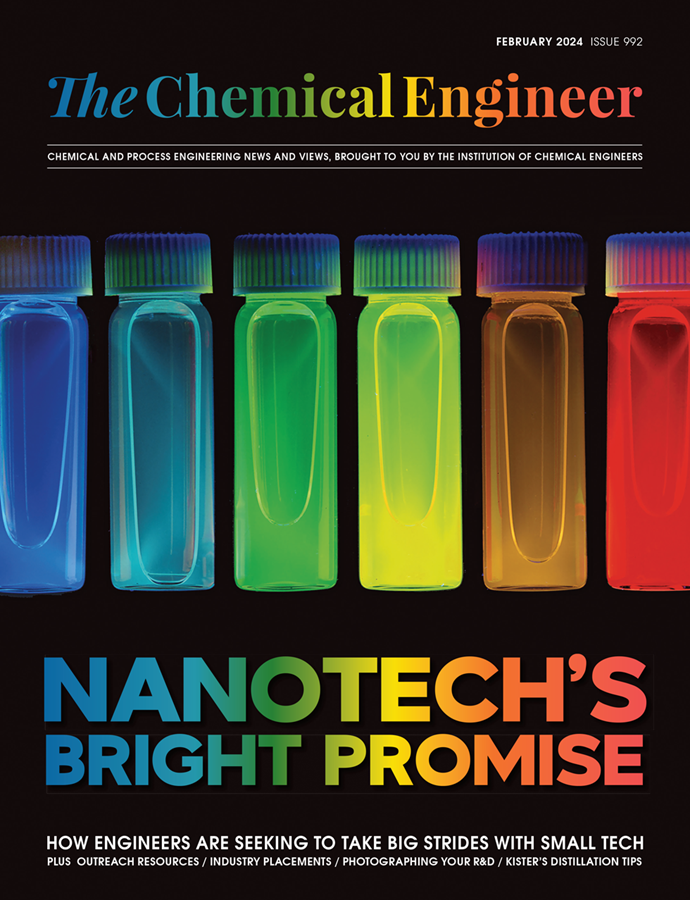Making (Anti)sense of Oligonucleotide Manufacturing
Anna Watson discusses the chemical engineering challenges of new modality medicines
IChemE’s Pharma SIG series, Access to Pharmaceuticals in the 21st Century, discusses the challenges for engineers working in the pharmaceutical industry, how they impact on the access to medicines for patients, and how things could be improved. This article, Part 3, looks at “new modalities”.
New modalities are an emerging category of medicines. They present a fantastic opportunity to treat a variety of diseases. However, the viability of new modalities is limited by: high costs (greater than ten times the price of gold per kilo to produce); high waste (each kilo of product creates at least 10 t of waste); and low manufacturing scale (manufacturing plant to produce commercial volumes does not yet exist).
In order for these new and promising medicines to reach patients, chemists and chemical engineers must innovate new processes to manufacture these medicines at >tonne scale.
Introduction
The active pharmaceutical ingredient (API) is the component of any drug that produces the intended effects. The majority of APIs in medicines are either small molecules or biologics. Small molecule APIs are typically chemically synthesised organic compounds with molecular weights below 900 g/mol. Biologics are typically much larger molecules and are extracted from biological sources. New modalities is an umbrella term for new API types that don’t fit into these two categories. Examples of new modality APIs include oligonucleotides, peptides, and antibody drug conjugates (ADCs).
Medicinal chemists in pharmaceutical discovery organisations have invented new modality APIs to interact with the human body in different ways to small molecules and biologics. New modalities can target previously un-targetable parts of the body and can treat diseases in better ways than existing medicines, improving patients’ quality of life, treating previously untreatable diseases, and potentially providing cures.
For example, oligonucleotides are a class of new modality API and are simply defined as short polymers of nucleotides, ie DNA or RNA molecules up to approximately 30 nucleotides in length. However, there are many different types of oligonucleotides, each with the potential for many unique modifications and they work in different ways to treat diseases. Oligonucleotide types include RNA interference oligonucleotides (siRNA, RNAi), anti microRNA (AMO), immunostimulatory sequences (ISS), and antisense oligonucleotides (ASOs).
The majority of oligonucleotides in AstraZeneca’s portfolio are antisense oligonucleotides (ASOs). These are single-strand DNA or RNA molecules that treat diseases by binding to specific messenger RNA to prevent protein translation. The sequence of the nucleotide bases (eg A-G-C-U) is selected to be complementary to the target messenger RNA (which has the sequence eg U-C-G-A).
Oligonucleotides can be modified to improve cellular uptake and/or pharmacokinetic properties. One method involves covalently attaching various ligands such as the carbohydrate N-acetyl galactosamine (GalNAc) to the oligonucleotide strand. These are known as conjugated oligonucleotides. At AstraZeneca, unconjugated oligonucleotides are described as “naked”. The molecular weight of ASOs in the AstraZeneca portfolio range from 5,000-8,000 g/mol.
Ambition
Until recently, all commercially-available oligonucleotide drug products have focused on the treatment of rare diseases, bringing life-changing medicines to small patient populations. This means the required scale of manufacture for oligonucleotide APIs was very small; usually <10 kg per manufacturing campaign.
Pharmaceutical companies, including AstraZeneca, are developing oligonucleotide APIs for large patient populations. For example, Novartis’ oligonucleotide drug product Inclisiran for treating patients with elevated LDL cholesterol levels was recently approved in the EU (Dec 2020).
Treating larger populations of patients will require production of tonne/year quantities of oligonucleotide APIs, or even higher! This presents a challenge for chemists and chemical engineers to design and develop manufacturing processes that can economically and sustainably produce oligonucleotides at tonne scale.
Recent Editions
Catch up on the latest news, views and jobs from The Chemical Engineer. Below are the four latest issues. View a wider selection of the archive from within the Magazine section of this site.




